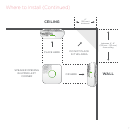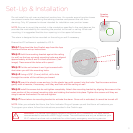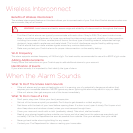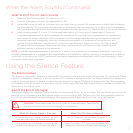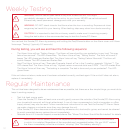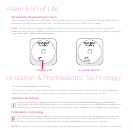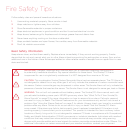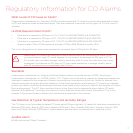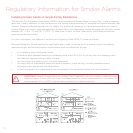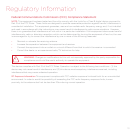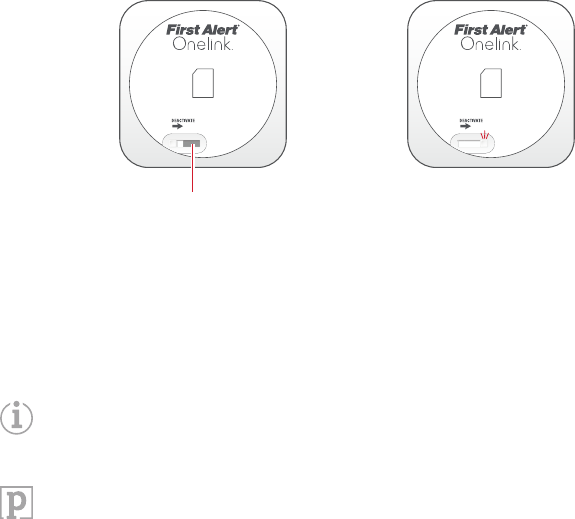
13
Alarm End of Life
Permanently Deactivating the Alarm
After 10 years of operation or Low Battery warning, deactivate the Alarm by following the diagram below: Insert a
tool below the edge shown and break tab. Then slide activation switch to DEACTIVATE mode.
NOTE: At end of life or low battery indication (chirp): unit must be put into deactivation mode to deactivate
remaining stored energy in battery. Unit will no longer function once put into this mode. Unit will resist re-mounting.
Once deactivated, replace Alarm immediately.
2. SLIDE SWITCH1. BREAK TAB
Ionization & Photoelectric Technology
This alarm uses Photoelectric technology.
All First Alert
®
Onelink
®
Smoke Alarms conform to regulatory requirements, including UL217 and are designed to
detect particles of combustion. Smoke particles of varying number and size are produced in all fires.
Ionization Technology
Ionization technology is generally more sensitive than Photoelectric technology at detecting small particles,
which tend to be produced in greater amounts by flaming fires, which consume combustible materials rapidly and
spread quickly. Sources of these fires may include paper burning in a wastebasket, or a grease fire in the kitchen.
Photoelectric Technology
Photoelectric technology is generally more sensitive than ionization technology at detecting large particles,
which tend to be produced in greater amounts by smoldering fires, which may smolder for hours before
bursting into flame. Sources of these fires may include cigarettes burning in couches or bedding.
NOTE: For maximum protection, use both types of Smoke Alarms on each level and in every bedroom of your home.





